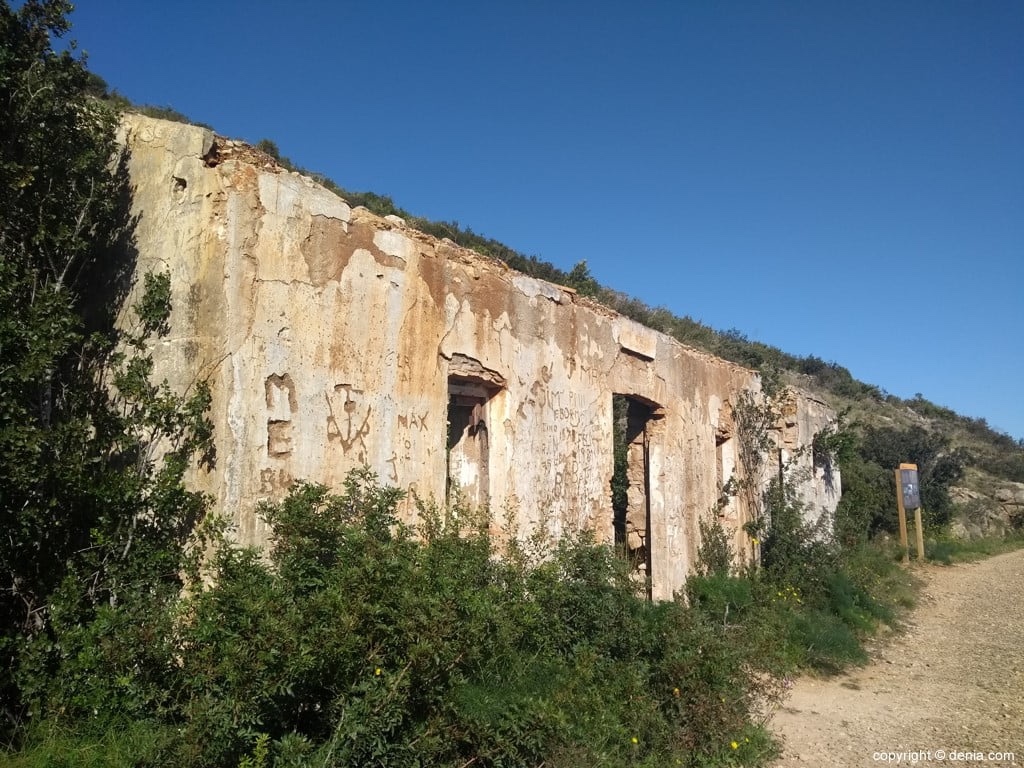
The Camí de la Colònia
I walked the Camí de la Colònia yesterday, a trail that winds its way along the eastern side of the Montgó Massif and through the Vell Montgó, where the first inhabitants of Denia lived. There and back it’s just over six miles – a total of nine with the walk through the outskirts of town to reach the starting point.
It starts at the Pare Pere Hermitage, now devoted to retreat, meditation and prayer. Beside it there’s a small stone dwelling, bijou in estate agent parlance, where Father Pedro Esteve spent the last years of his life, a lone hermit in commune with nature (pictured below). Legend has it that when a cholera epidemic hit Denia in 1633, the sick were healed on eating loaves that he’d blessed.
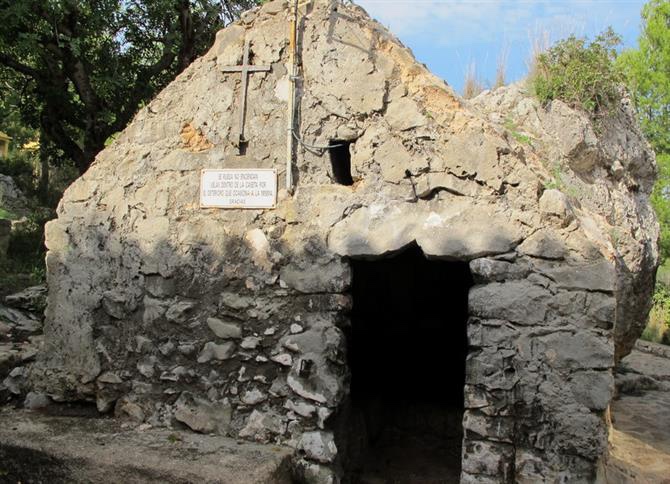
I’ve read of another event that took place later, during the Civil War, when anarchists had wanted to burn Pare Pere’s body. Manuel Vallalta Vallalta, an eminent local doctor, who’d suffered for his political views during Franco’s rule, which included a period of incarceration, took a small scalpel and went to the site of the Padre’s body. There he cut off a piece of a finger and, showing it to the anarchists, said: “Look at this. He is a man just like you, he is not a wood carving, so let him rest. Put him back where he was”. And they did.
In 1921, the Colonia Agrícola del Montgó was launched, which lead to the allocation of fifty-one parcels of land to settlers around the original site of Vell Montgó, where the earliest inhabitants of Denia had lived. Each plot had an area for cultivation and came with a simple house, complete with water cistern and oven. The picture at the top of the page shows the ruins of one that I passed on the walk, and the grainy picture below shows how it might once have looked.
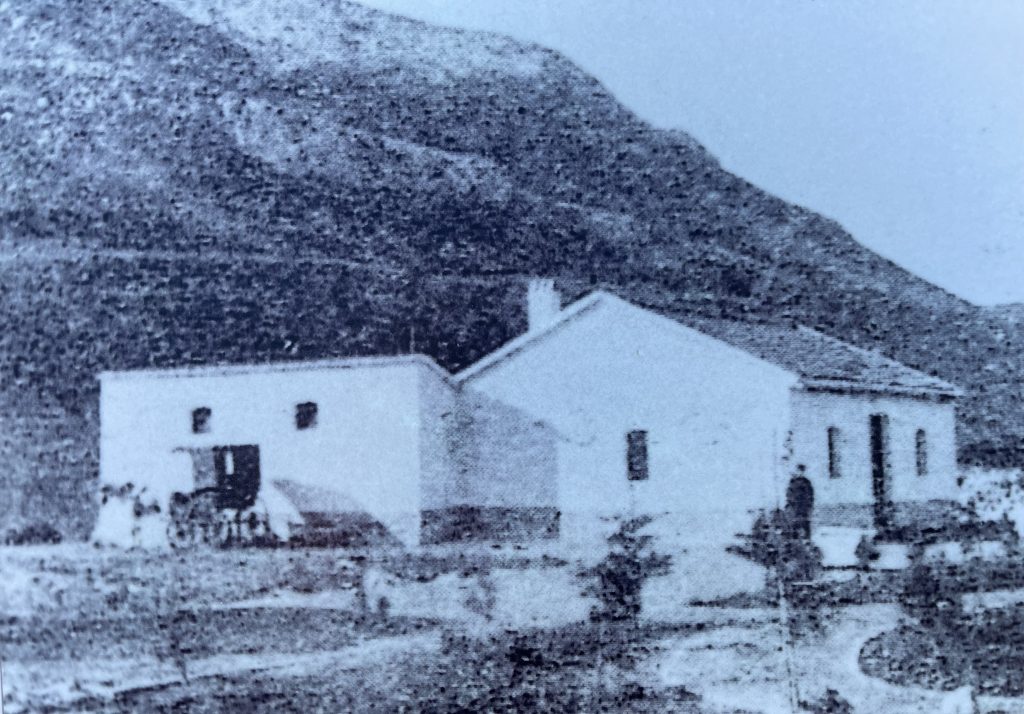
The project also saw the construction of stone terraces on the slopes of the Montgó, allowing cultivation of vines, almonds and carob trees. The picture below shows one of the terraces, now abandoned and overgrown. The roughly hewn access road built for the settlers is now the Camí de la Colònia trail
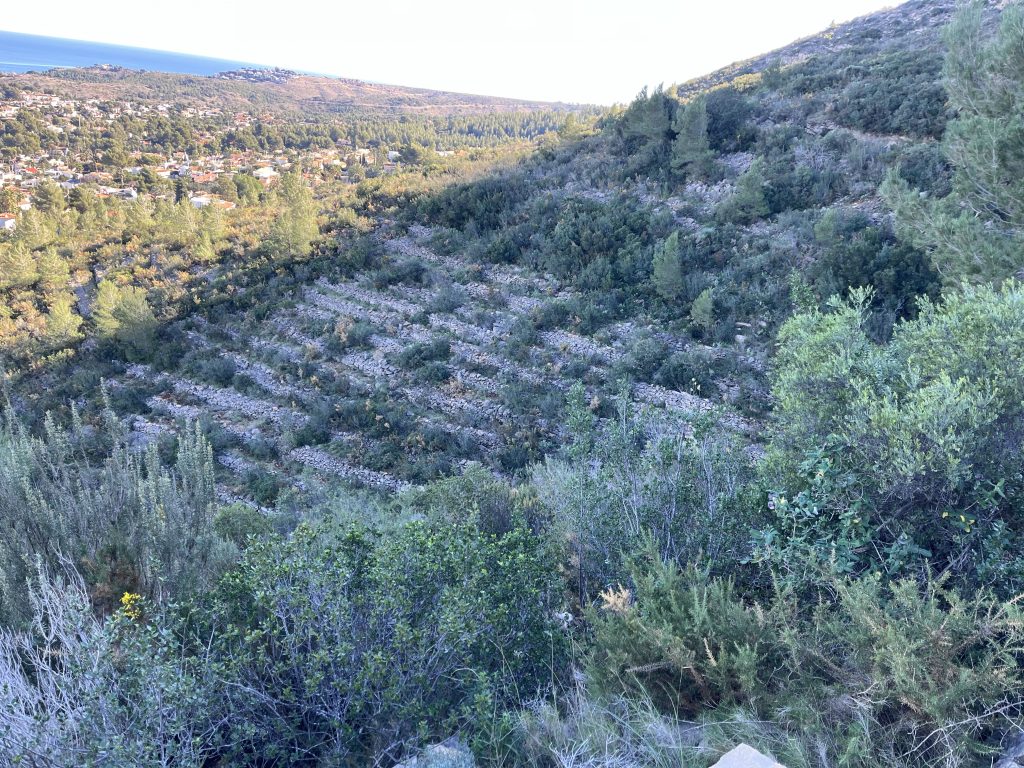
The Colonia Agrícola’s endeavour enjoyed success for a while but the decimation of the raisin industry by the phylloxera blight, referred to in an earlier post, and the economic crisis of 1929, lead eventually to its demise and plots were abandoned as settlers left.
The walk finishes, or rather reaches the turning point for going back to the start, at the end of a rough track that winds its way round the north side of the Montgó, where the earlier route that allowed access for the settlers thins out. Here you reach the Cova del Gamell, a cave, of which there are three pictures below, into which shepherds used to herd goats and sheep at night.
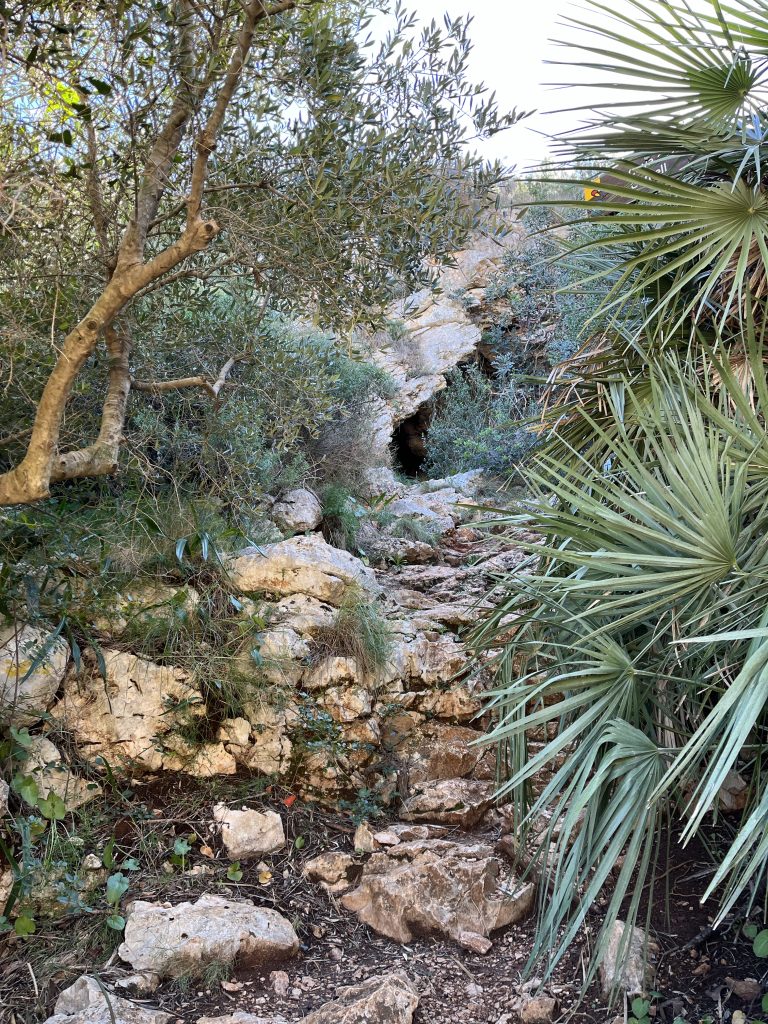
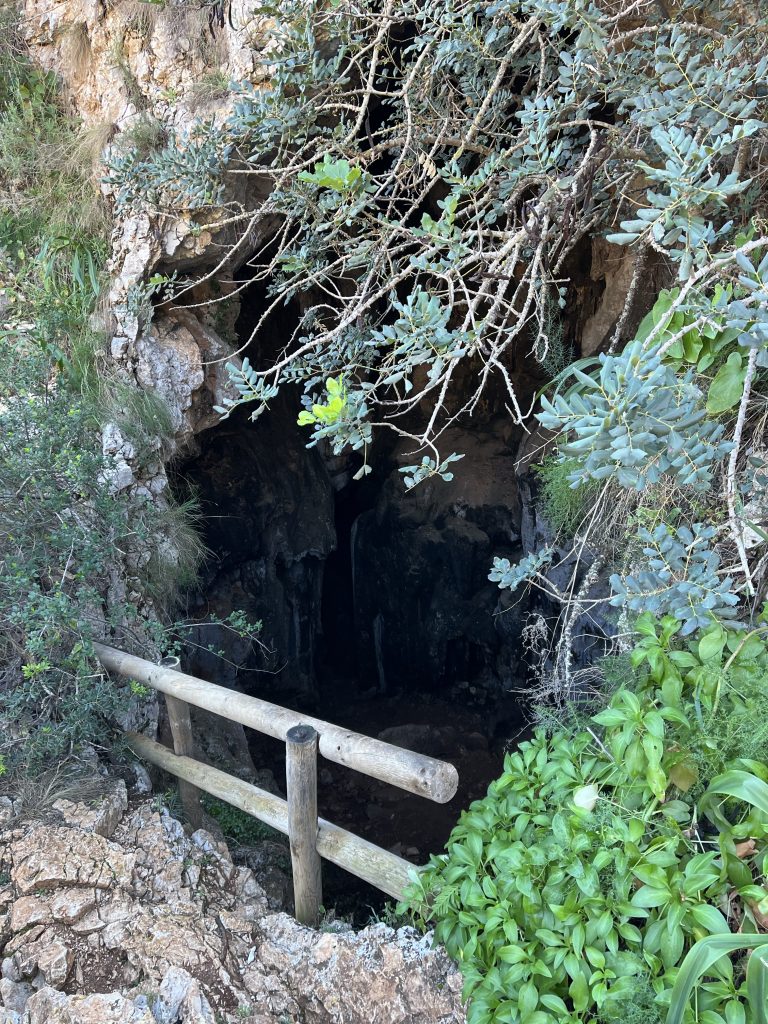
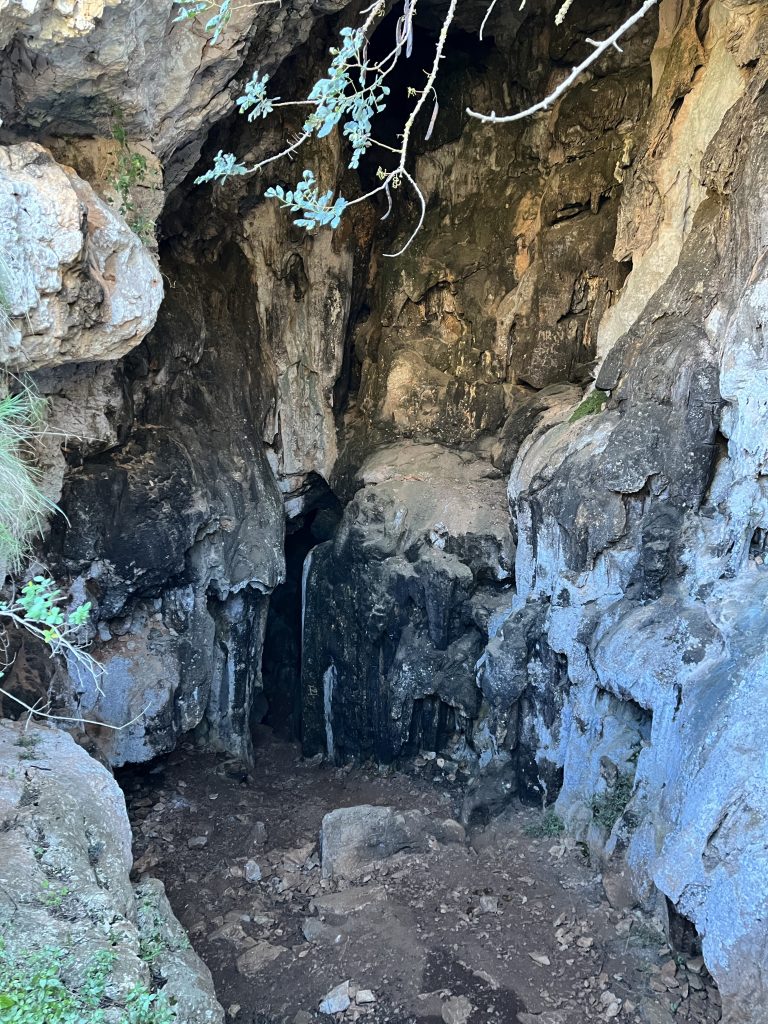
Although the cave gives the walk its name, a dark, dank hole in the rocks is a pretty underwhelming climax. But the walk itself, although chilly in places because the Montgó blocks the sun until early afternoon, offers some magnificent views of Dénia, the Montgó’s towering cliffs, the mountain range of the Sierra Segaria and the Gulf of Valencia. Here are a few pictures.
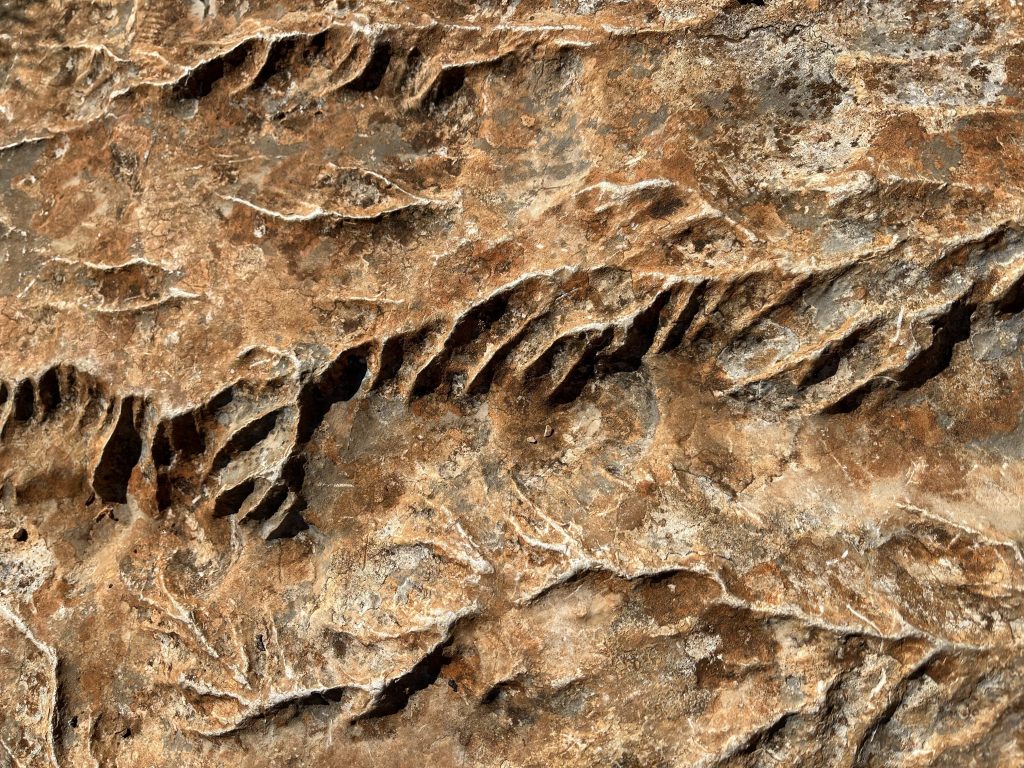
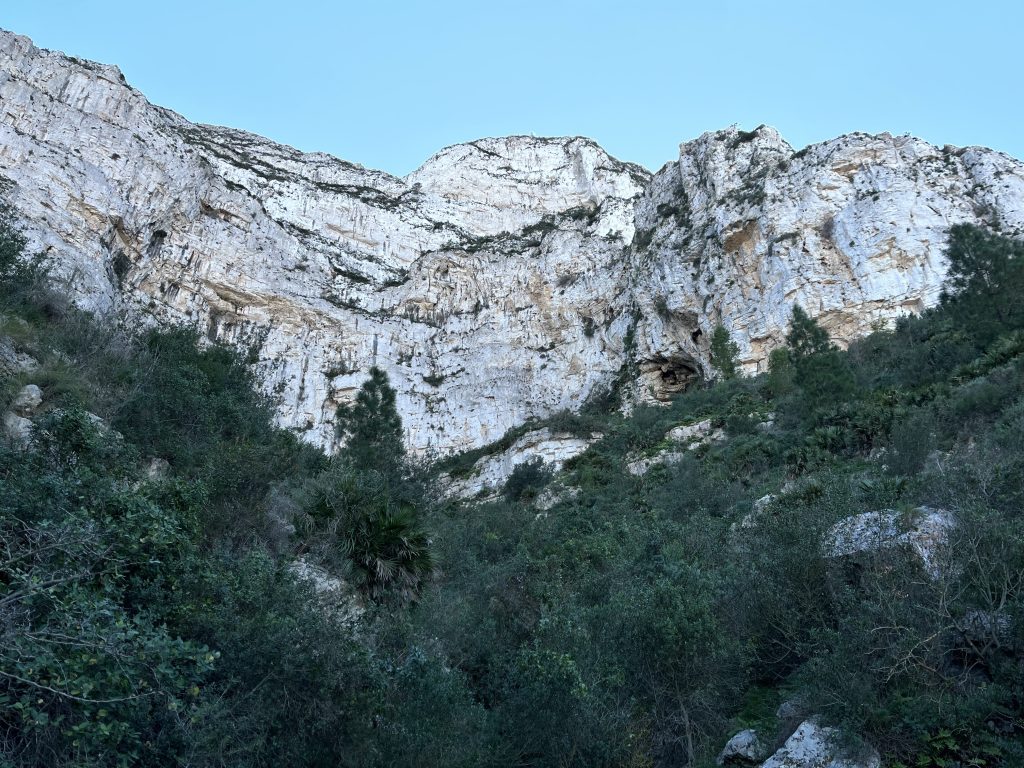
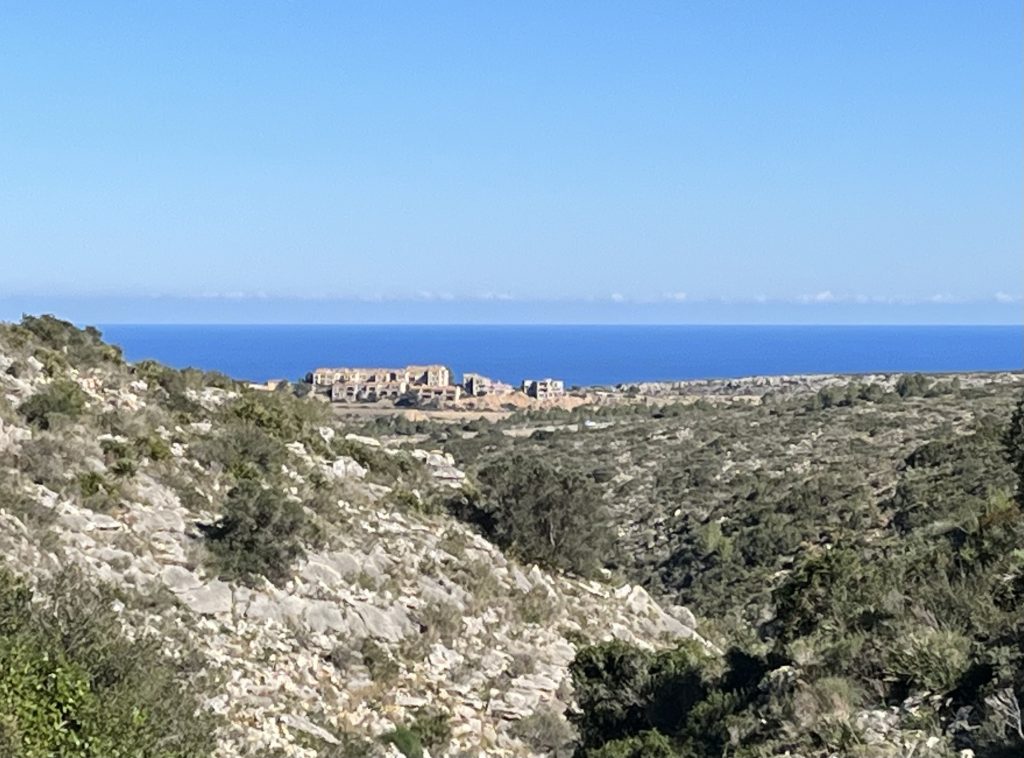
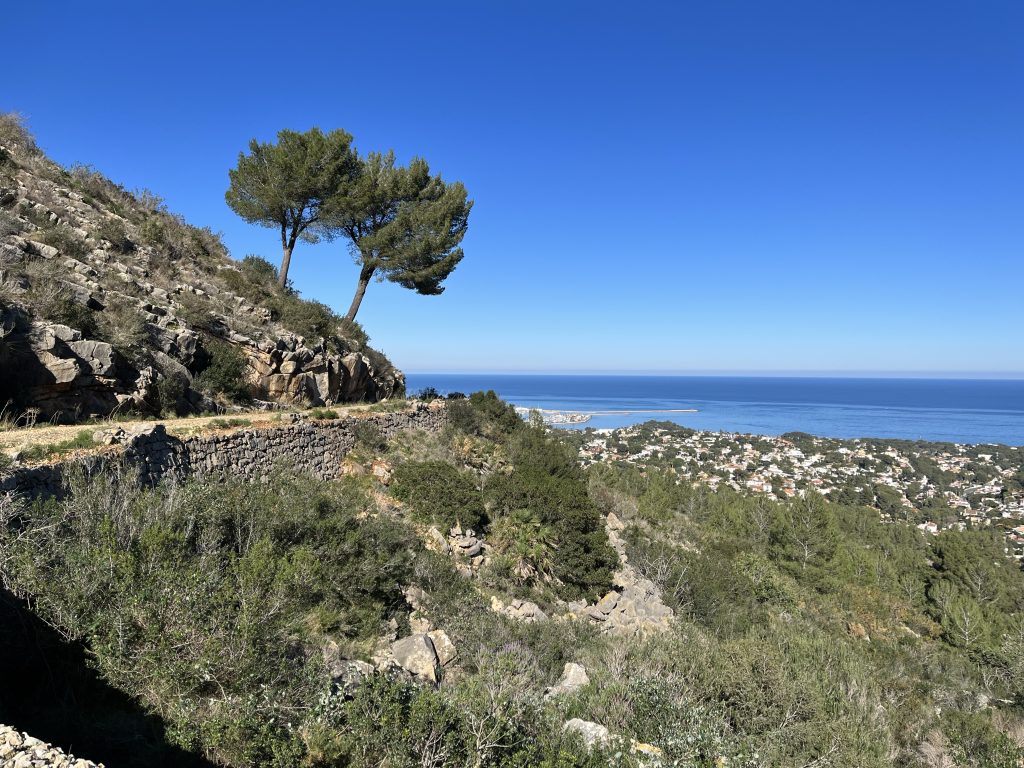
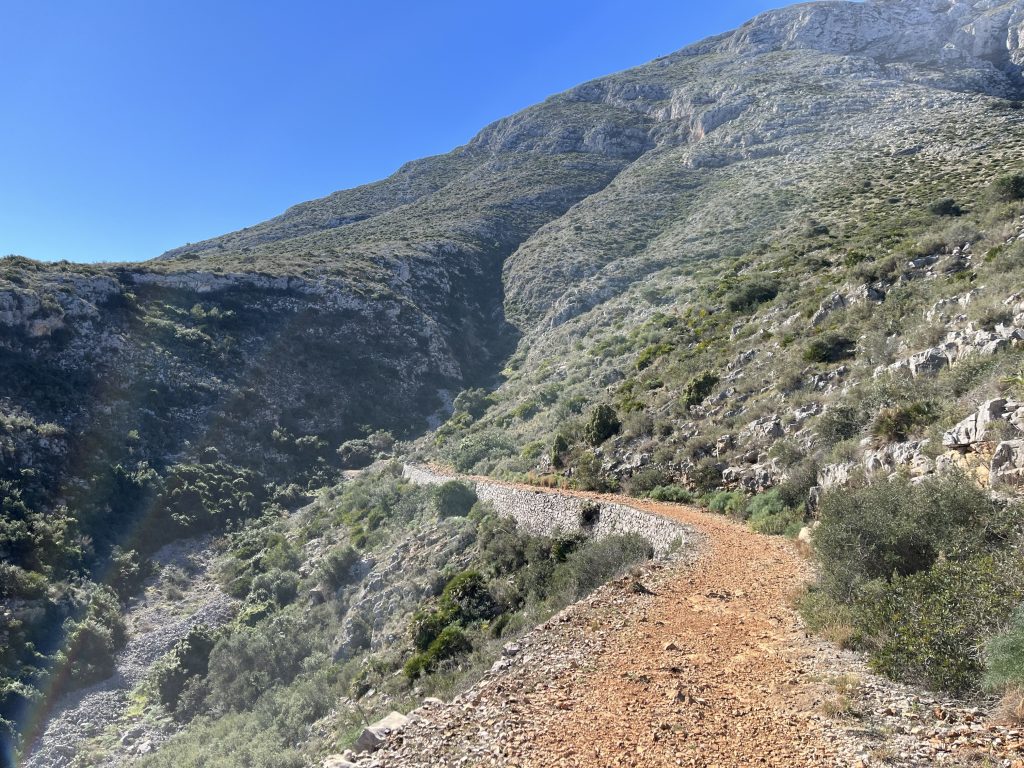
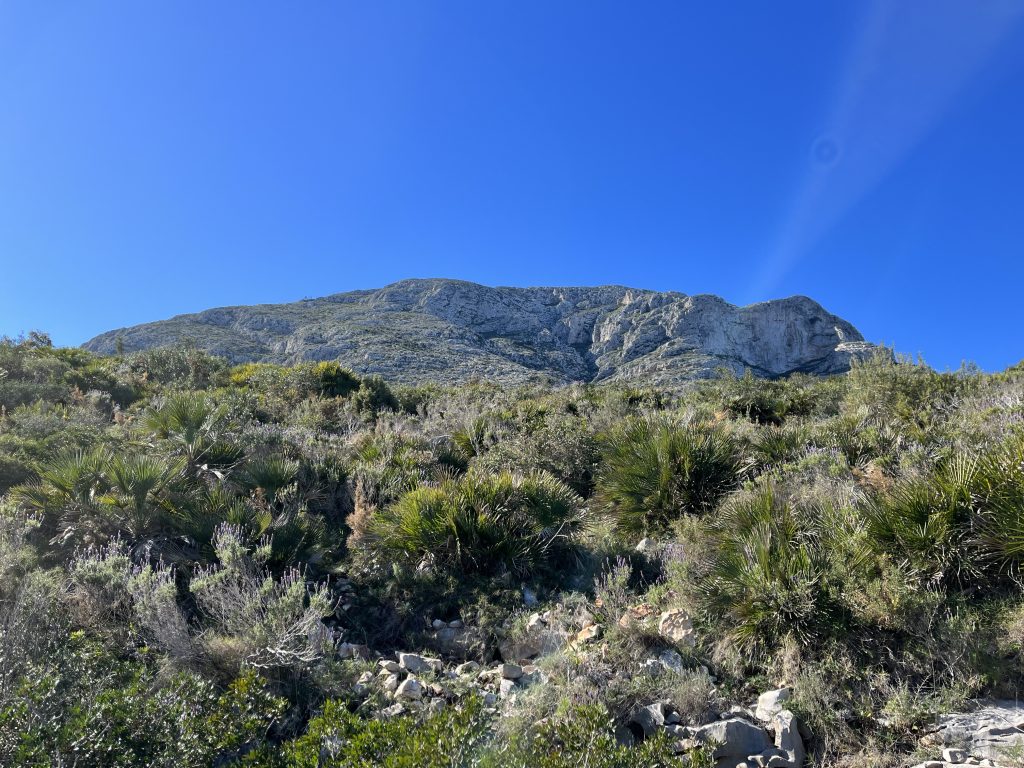
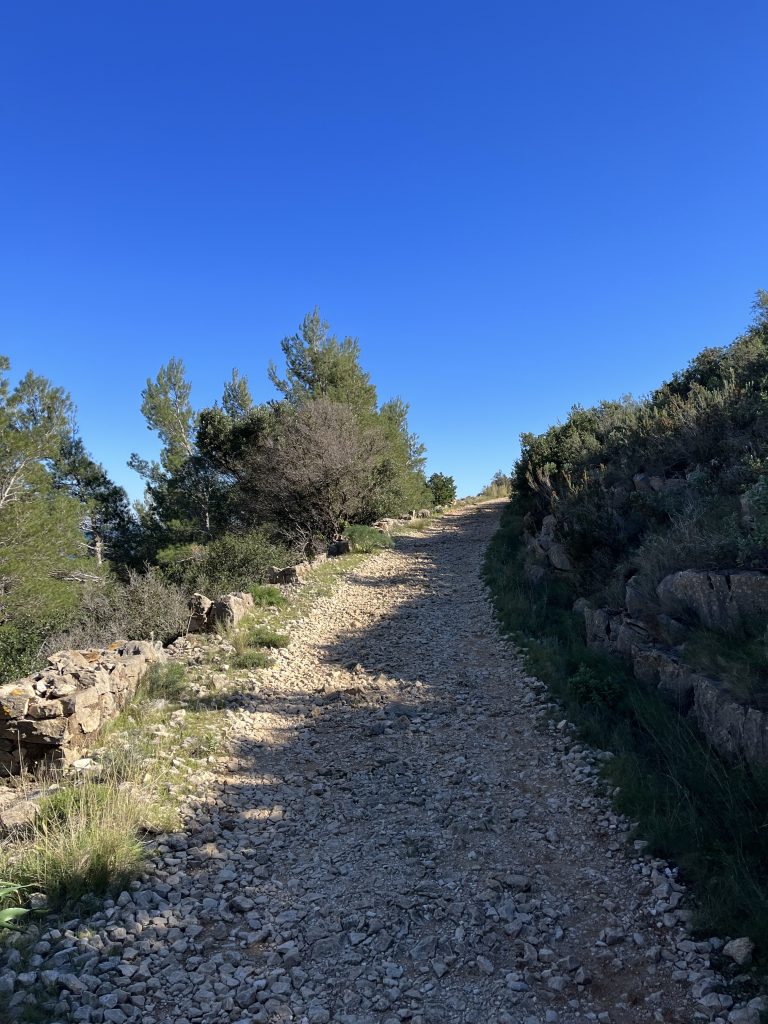
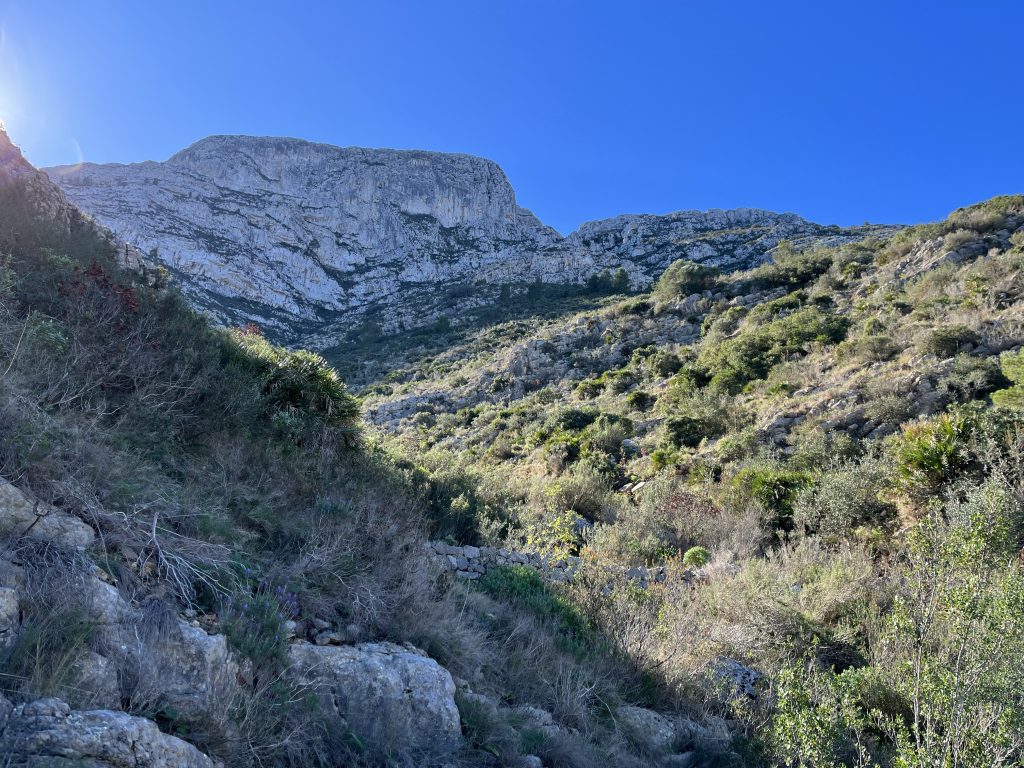
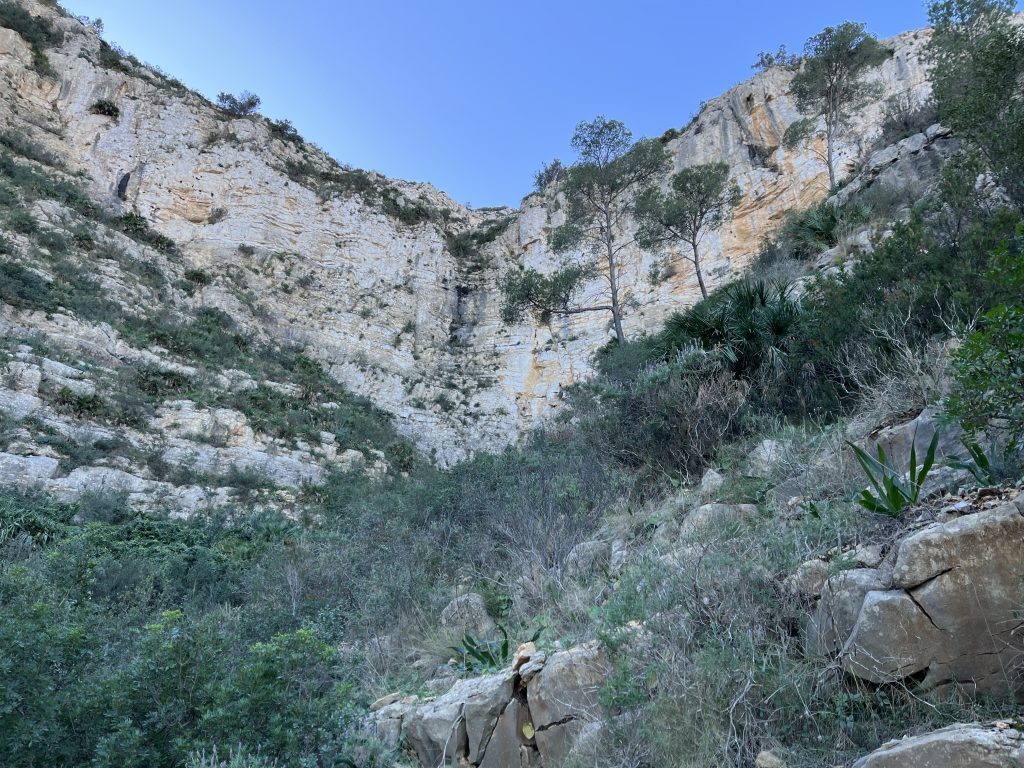
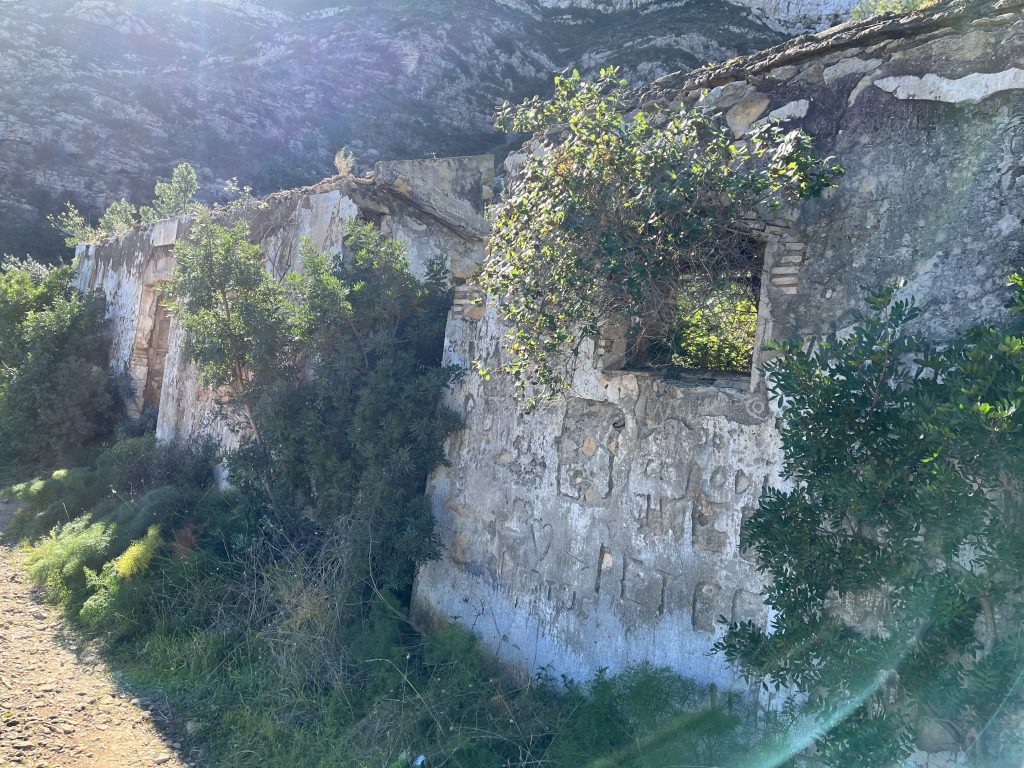
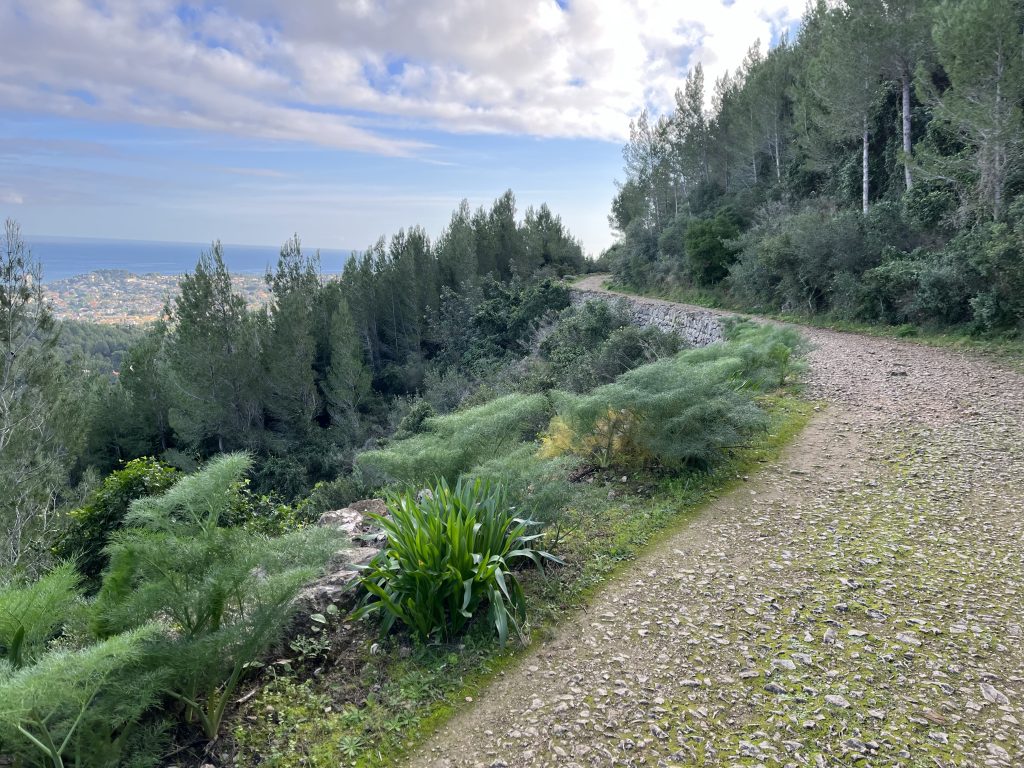
Great scenery, mountain goat exploits today then! I think the rock shows fossilised ant roots rather like the ones you can see at Budleigh
Ah … I haven’t see those. I’ll go have a look when I’m back. Where are they in Budleigh?
Along the path by the ice cream places. Think also at Sidmouth round Jacobs ladder
Ah – I’m sure I’ll have passed them but will go and take a look next time I’m there. Thanks.